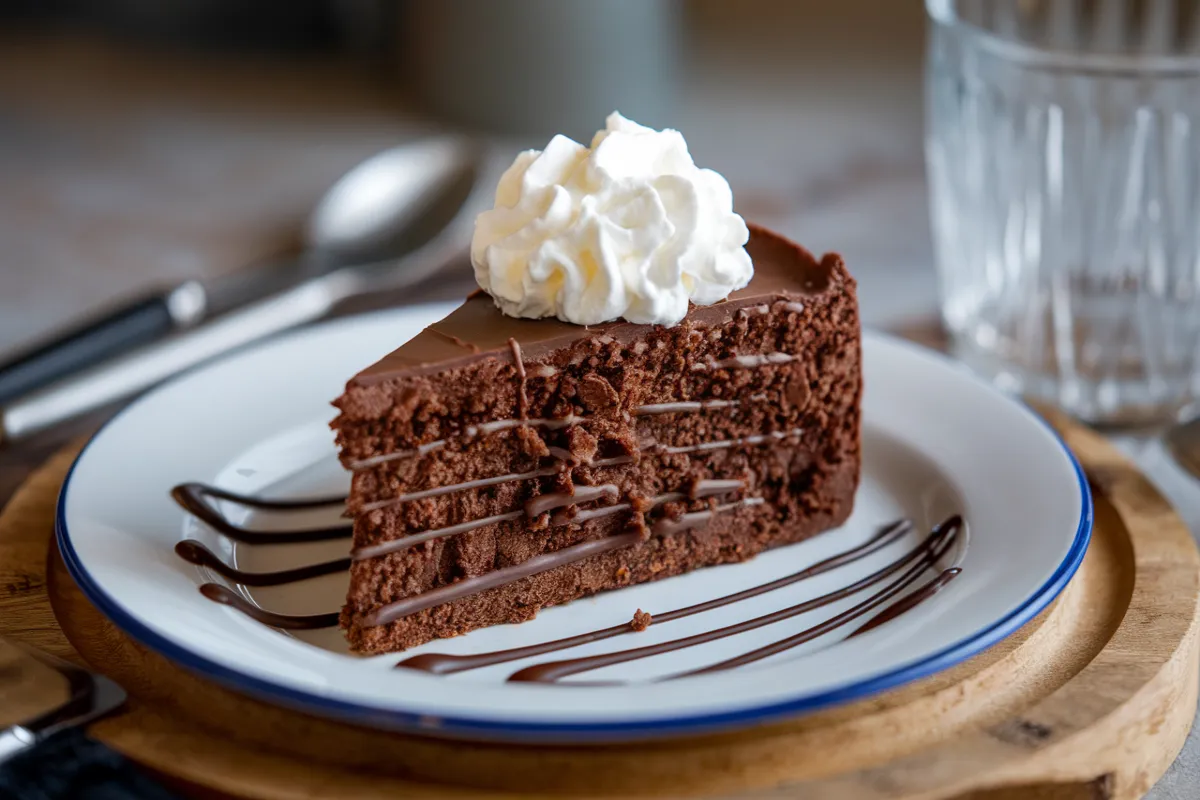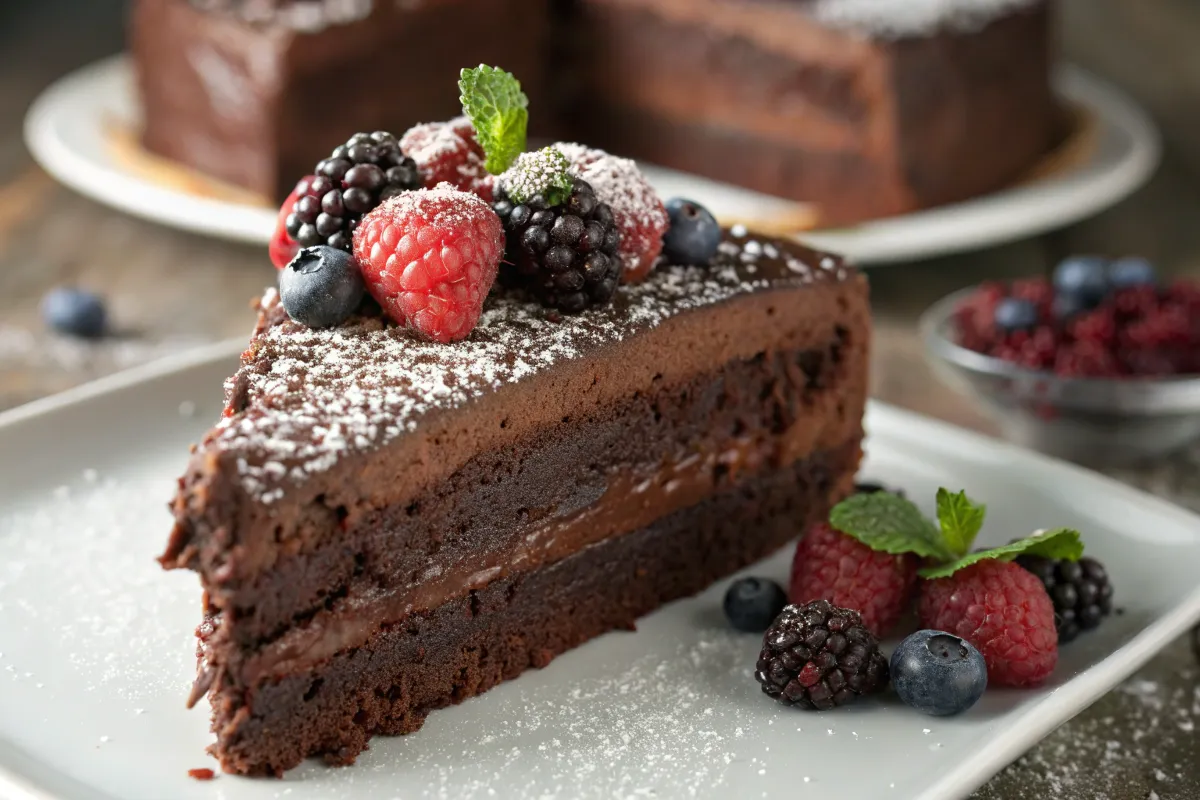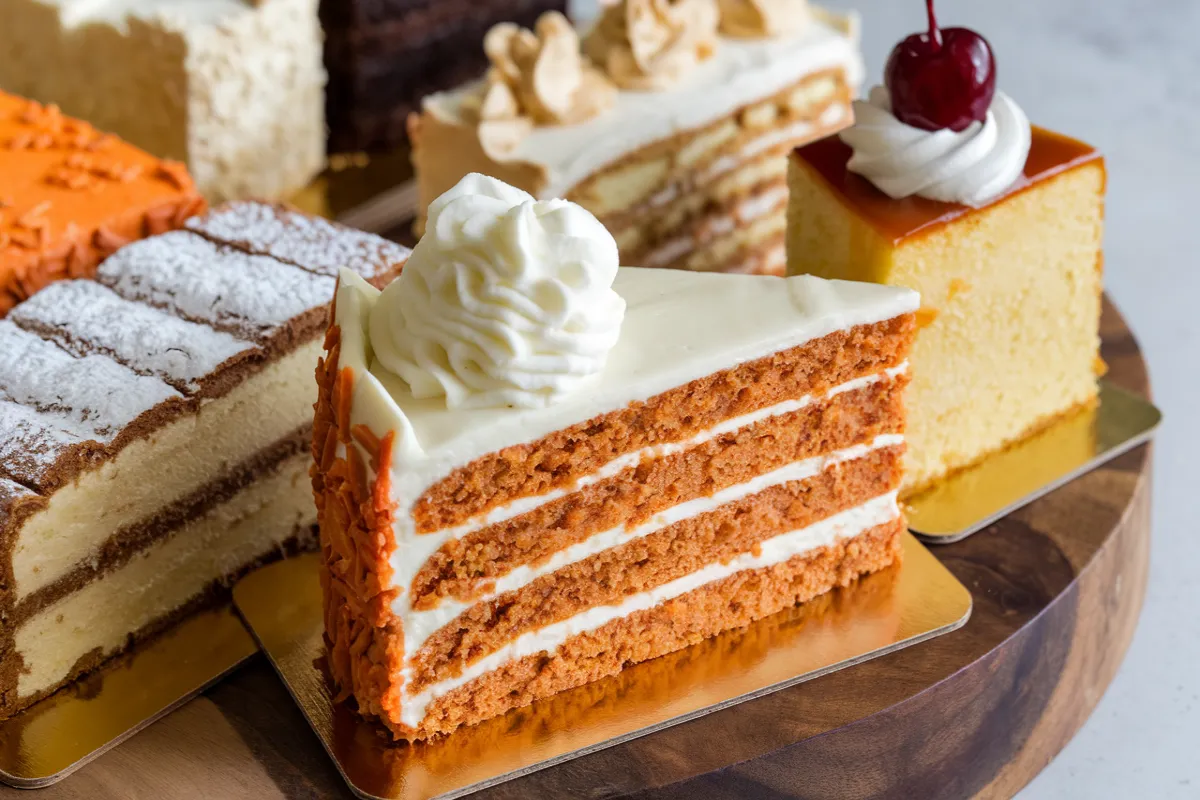This article explores the secrets to baking a moist cake, discussing different types and techniques to achieve the perfect texture. Discover what makes some cakes so much more moist than others.
Understanding Cake Moisture: What Makes a Cake Moist?
Baking a moist cake is often the goal for any baker. Achieving this requires understanding the science behind it. Therefore, it’s not just about the recipe, but also the techniques used. Water content, fat content, and gluten development all play key roles. A balanced approach is crucial.
The Role of Fat in Moist Cakes
Fat is very important in creating a moist cake. It coats the flour particles. Consequently, it hinders gluten development. Moreover, fat adds tenderness and richness. Butter and oil are common choices. Each offers different results. Butter adds flavor. However, oil creates a very moist crumb. Therefore, many recipes use a combination.
The Importance of Sugar in Cake Moisture
Sugar, in addition, contributes to moisture. It is hygroscopic. That is, it attracts and holds onto water. Therefore, more sugar leads to a more moist cake. However, too much sugar can make the cake too dense. A good balance is needed. It should not be overly sweet nor too dry.
The Impact of Liquid Content on Moistness
The liquid content, of course, is very important. It hydrates the flour. It also activates the leavening agents. This creates the necessary steam for lift. Moist cakes often have a higher liquid ratio. Milk, buttermilk, or even sour cream are common choices. Furthermore, the type of liquid matters, too.
What Type of Cake is the Most Moist? Exploring the Options
Many cake types exist, but some are known for being moist. We will now explore some of the most common and how to achieve maximum moisture. Let’s look at what type of cake is the most moist.
Oil-Based Cakes: The Moisture Champions
Oil-based cakes are generally considered the most moist. The oil remains liquid at room temperature. Therefore, it does not solidify like butter does. This is the reason why they stay moist for longer. For instance, carrot cake and chocolate cake often use oil. They have a very tender and moist crumb.
Why Oil Works Better Than Butter for Moistness
Oil coats the flour proteins, inhibiting gluten formation more effectively than butter. Consequently, this leads to a more tender and moist cake. The liquid nature of oil also prevents a dry texture. Therefore, it is the best way to keep cakes moist. This ensures a soft, desirable crumb.
Best Oil Choices for Moist Cakes
Various oils work well for moist cakes. Vegetable oil is a popular and neutral choice. Canola oil also works fine. Both add moisture without altering the flavor. Additionally, coconut oil can add a touch of flavor. However, use it sparingly. The choice of oil should also complement the other flavors in your cake.
Butter-Based Cakes: The Flavor Advantage
Butter cakes may not be as moist as oil-based ones. They do offer superior flavor. Butter adds a creamy taste that oil can’t match. However, butter can be used strategically. Moist cakes can still be made with butter. Indeed, it is all about technique.
Techniques for Keeping Butter Cakes Moist
Adding extra liquid is key. Buttermilk and sour cream are very useful. Furthermore, incorporating the butter properly is also important. Creaming it with the sugar ensures a fluffy batter. This contributes to a better texture. Indeed, the process matters. The creaming process is also essential for incorporating air into the batter. This contributes to a lighter cake.
When Butter is the Best Choice
Butter is the best for certain cakes. These include pound cake and vanilla cake. The rich flavor makes a great difference. For a moist version, one must be careful with the ingredient ratios. Moist butter cakes are achievable. However, it requires a keen eye and careful execution.
Sponge Cakes: Light and Airy
Sponge cakes are known for their light and airy texture. They are not generally known for being moist. Their structure depends on whipped eggs, not fat. However, certain techniques can help retain some moisture.
How to Achieve Moisture in a Sponge Cake
Using a simple syrup after baking helps. The syrup adds moisture. Moreover, a high proportion of eggs can increase moisture. However, overbaking must be avoided. This leads to a very dry cake. Also, soaking cakes right after baking helps the syrup absorb better. This is essential for sponge cakes.
Examples of Sponge Cakes and Their Moistness
Angel food cake is a classic sponge cake. It is very light. However, it is not very moist. Genioise, on the other hand, can be moist. The key is using the right method. Consequently, each sponge cake type is different. It really depends on how the cake is made.
Recipes and Techniques for the Moistest Cakes
Achieving a moist cake is not just about ingredients. It also depends on techniques and the order things are done. Here we look at some methods that help create the most tender and moist results. These approaches will change the way you think about baking.
Proper Mixing Techniques for Moist Cakes
Overmixing is a common mistake. It creates tough gluten, which leads to a dry cake. Therefore, mix until just combined. Using the right speed on your mixer helps too. Low speed is often better. However, there are cases where high speed is needed. It’s important to learn when and how much to mix your batter. Always ensure it’s just combined.
The Importance of Liquid Ratio and Ingredients
The right liquid ratio is crucial. Too little liquid means a dry cake. Too much liquid results in a dense one. The type of liquid also matters. Buttermilk, for instance, adds a tender crumb. Therefore, consider your choices carefully. Each liquid impacts the final product. It’s important to choose wisely based on the desired outcome.
The Impact of Baking Temperature and Time
Baking time and temperature affect moisture levels. Overbaking is the most common reason for dry cakes. Always check with a toothpick. Therefore, it’s better to take it out slightly underbaked. The residual heat will cook it through. A good oven thermometer helps ensure correct temperatures. Baking is a science and needs to be respected.
Using Soaking Syrups for Added Moisture
Simple syrups add extra moisture to cakes. This is useful for sponge cakes. It also works well for other cakes. Brush the cake while it’s still warm. This allows the syrup to soak in. Therefore, this technique is very effective. It is the best solution for cakes that are already baked.
The Science Behind Moist Cake Ingredients
Let’s delve deeper into the scientific roles of various ingredients in cake baking, particularly how they contribute to or detract from the moisture level of the final product. Understanding this allows bakers to make informed choices and adjust recipes. We’re going to break down why certain ingredients work wonders for moist cakes.
Flour Types and Their Influence
The type of flour used significantly impacts the texture and moisture of a cake. All-purpose flour, for instance, has a moderate protein content, which can lead to a slightly drier cake if not handled correctly. Therefore, cake flour, with its lower protein content, produces a more tender and moist crumb. Additionally, when considering what type of cake is the most moist, consider the protein content of your flour.
How Lower Protein Flour Impacts Moisture
Lower protein flours create less gluten when mixed with liquids. This results in a more tender cake that feels moist. It’s all about controlling gluten development. So, the type of flour you choose can make a significant difference to the outcome.
The Impact of Gluten Development on Cake Texture
Excessive gluten development leads to a tougher, drier cake. Therefore, it is best to mix your cake batters just until the flour disappears. This careful approach is needed for moist results. Always make sure to handle the batter with care.
Understanding the Role of Eggs
Eggs are crucial ingredients in cake baking. They add structure, richness, and moisture. However, the way they are used can impact the final texture. The yolks contain fat and lecithin, which are key for moisture. Egg whites, meanwhile, add structure and air.
The Function of Yolks and Whites in Cake Moisture
The yolks contribute to a moist cake. Whites, though, can dry the cake if overused. A good balance between yolks and whites is key. Therefore, recipes that call for extra yolks often have a moist result. Always remember the balance is crucial.
Egg Techniques to Improve Moisture Retention
Adding an extra egg yolk or two is sometimes recommended. Over-whipping egg whites can dry out a cake. Therefore, gently fold them into the batter. Proper technique is essential to get the desired texture. It should not be an afterthought.
The Importance of Dairy Products in Cake Baking
Dairy products, such as milk, buttermilk, and sour cream, play vital roles in creating moist cakes. They add liquid content and richness. They also help tenderize the gluten. All these factors contribute to a much better cake.
How Different Dairy Products Affect Cake Texture
Buttermilk and sour cream add acidity. This helps create a tender crumb. Milk is milder. It also adds needed liquid. The choice of dairy matters when striving for a moist cake. Therefore, one should experiment to see what works best.
The Role of Fat Content in Dairy for Moistness
The higher the fat content of the dairy, the more moist the cake will be. Whole milk and full-fat sour cream will always lead to a more tender outcome. When trying to figure out what type of cake is the most moist, always remember the dairy’s fat content. It is a significant factor.
Additional Baking Tips for Superior Moistness
Here are some additional tips and techniques to further enhance the moistness of your cakes. These methods often make the difference between an average cake and an amazing one. With these, you will create the best tasting moist cake that is just perfect.
Incorporating Warm Liquids in Batters
Using warm liquids, such as warm milk or water, in cake batters can sometimes help create a more moist result. The warmth can help the fats emulsify more effectively. It also makes a smoother batter that is better for baking. This small trick can yield big results.
Why Warm Liquids Aid Emulsification
Warm liquids assist in the even dispersion of fats throughout the batter. This results in a more uniform texture, and a moist crumb. However, do not use excessively hot liquids. This can cook the eggs. Always follow the recipe carefully.
When to Use Warm Liquids for Best Results
This technique works particularly well with recipes that contain melted butter or chocolate. It creates a smoother, better batter that bakes more evenly. However, make sure the liquids are not too hot. The purpose is to aid, not to harm the batter.
The Importance of Cake Pans
The type of cake pan can affect the moistness of your cakes. Dark pans absorb more heat, potentially leading to drier edges. Lighter pans bake more gently. Also, using the correct size pan helps ensure even cooking. Therefore, the cake pan matters more than many think.
How Pan Color Impacts Cake Moisture
Dark pans conduct heat faster and more intensely. This causes the edges of the cake to bake quicker than the center. This can lead to dry and burnt edges. Lighter pans bake more evenly, leading to a more moist cake. Choosing the right pan is a critical factor.
Pan Size and Its Relationship to Baking Time
Using the wrong sized pan will lead to under or over baked cakes. This impacts the texture and the moisture. The same cake batter in a large, shallow pan will bake quicker, whereas a smaller pan will take longer. Always follow the recipe and recommendations to ensure it cooks properly.
Other Factors That Influence Cake Moisture
Besides the main factors, other influences affect how moist a cake turns out. Let’s look at these elements for a better understanding. Understanding the reason what type of cake is the most moist also requires considering these additional factors. These elements often go unnoticed but have a real impact.
The Role of Leavening Agents in Moistness
Leavening agents, such as baking powder and baking soda, affect texture. Proper amounts are essential. Too much can dry out the cake. Too little will make it dense. Therefore, follow recipes carefully. Too much leavening can also cause the cake to rise too rapidly, which leads to cracking and dryness.
Humidity and Its Effect on Baking
Humidity affects the moisture levels. This is true in the baking process. On humid days, reduce liquids a bit. Dry days may require a bit more. It affects all baked goods. Keeping an eye on humidity can help ensure consistent results.
Storage Methods for Maintaining Cake Moistness
How you store your cake is important. Always wrap cakes tightly. This prevents air from drying it out. Some even use a slice of bread to add extra moisture to a container. Therefore, a good container is a must. This technique should always be employed. It’s a great way to maintain moisture.
Key Takeaways: Achieving the Moistest Cake
In conclusion, achieving the most moist cake involves many factors. It’s a mixture of right ingredients, correct technique, and proper storage. Understanding how things affect moisture is the key. So, always keep these tips in mind. These will truly change how you bake.
Choosing the Right Type of Cake for Moistness
For the most moist results, consider oil-based cakes. However, butter cakes can be made moist with careful steps. Therefore, knowing the characteristics is essential. Ultimately, the right cake depends on your preference. There is no ultimate right answer. It’s about finding what works best for you.
The Importance of Experimentation and Adjustments
Baking is often about experimentation. Don’t be afraid to adjust recipes. Small changes can make a big difference. A bit more of liquid, or a lower baking temperature might be all it takes. Therefore, try and find what works best for you. Don’t get disheartened by occasional failures, it’s all part of the learning curve.
Continuing Your Learning Journey
The journey to baking the perfect moist cake is an ongoing process. Continuously learn new techniques. Practice makes perfect. There is always room for improvement. Indeed, every cake teaches you something new. The world of baking is vast. Always strive to learn and improve.
Frequently Asked Questions (FAQs):
What is the secret to a moist cake?
The secret to a moist cake lies in the balance of ingredients, especially fats and liquids. Using oil instead of butter can enhance moisture. Also, proper mixing and not overbaking are essential. In addition, adding a syrup after baking can help retain moisture.
What is a moist cake called?
There isn’t a specific name for a moist cake. It is more about the texture than the type. Cakes described as “tender” or “rich” are often very moist. Cakes like carrot cake, chocolate cake, and oil-based cakes are often very moist. However, some butter cakes can also be moist.
What makes cake moist and not dry?
Moist cakes have a higher ratio of liquids and fats. This helps prevent a dry texture. Furthermore, sugar draws in moisture. Therefore, it contributes to moisture content, too. Using the right mixing techniques also helps. Moreover, overbaking removes moisture. Therefore, it leads to dryness.
Is yellow or white cake more moist?
Generally, yellow cake is more moist than white cake. Yellow cake often uses egg yolks. These add richness and fat. In contrast, white cake uses only egg whites. This makes it drier. However, the method and ingredients matter more than the color alone.



